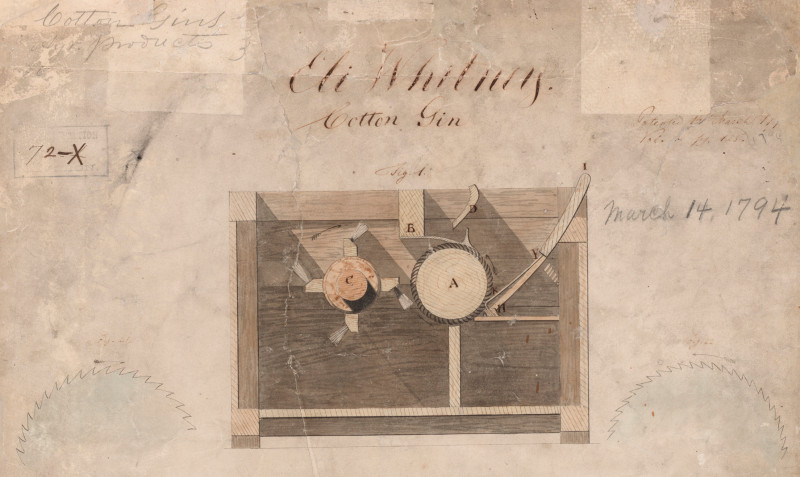- by: Al Williams
If you went to elementary school in the United States, you no doubt learned about Eli Whitney’s cotton gin as an example of how the industrial revolution took previously manual processes and replaced the low-efficiency of human labor with machines. The development of the cotton gin — patented in 1794 — involves an interesting lesson about solving engineering problems.
Farmers in the southern United States had a big problem. Tobacco was a cash crop, but it eventually left your fields barren and how to solve that problem wasn’t understood yet. Indigo was valuable for dye, but the British were eating away that market with indigo created in its colonies. Rice requires a lot of water and swamp, so it was only suitable for certain areas.
There was one thing that grew very readily in much of the land: cotton. Unfortunately, the cotton had little seeds you had to remove. A single person could clean — maybe — a pound of cotton a day. In the late 1700s, plantation owner Catharine Littlefield Greene introduced Whitney to a group of farmers were trying to decide if there was a way to make cotton a more profitable crop.
SOLVING THE WRONG PROBLEM
Reportedly, Whitney found inspiration in a very strange way. He couldn’t figure out how to remove the little entrenched seeds from the cotton. But one day he saw a cat trying to pull a chicken through a fence. The cat was unsuccessful but managed to get some feathers. That was the key: Don’t try to remove the seeds from the cotton, but remove the cotton from the seeds.
The gin — short for engine — had tiny hooks that would pull cotton fibers or lint through a mesh. The seeds couldn’t make it through. By changing the machine from one that removes seeds to one that removes cotton, the design was very simple.
An 1883 article in the North American Review claimed that Mrs. Greene had made some suggestions about the design of the machine. However, the author didn’t provide any source for the claim and it remains unproven. It wouldn’t be surprising, though. Greene certainly provided financial support as well as encouragement.
Greene’s plantation manager, Phineas Miller, became Whitney’s business partner. Whitney, Miller, and Greene did not intend to sell the gin, instead planning a model where they would own all the machines and take a percentage of the clean cotton as a fee. Cotton as a service, if you will. The gin could do about 55 pounds a day, so one simple machine and one or two people could do the work of at least 55 people.
AFTERMATH
The gin made cotton profitable which was a boon to the south, but did manage to keep slavery going for another seven decades — that wasn’t Witney’s intent, of course. The service model failed because the device was simple enough, that people copied it — illegally, in light of the new patent laws. In the end, he didn’t make the money he hoped for, although he did make some and became famous for his labor-saving invention. He would go on to pioneer the use of interchangeable parts in manufacturing, but that’s an entirely different story.
How many times are we faced with a problem that we can’t quite solve? It is worth taking a page from Whitney’s book and asking yourself how to flip the problem around to see if that helps. We are just glad the gin shorthand didn’t catch on as we’d hate to have to say we work as gingineers.


